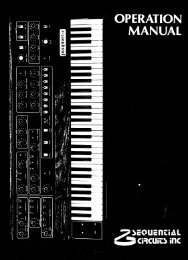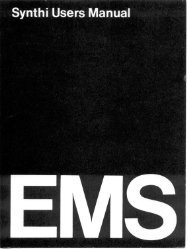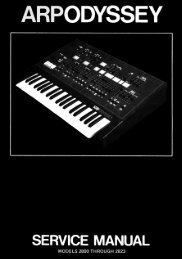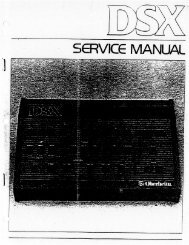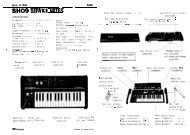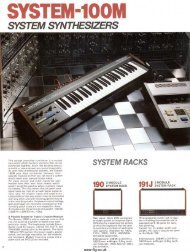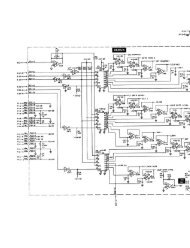ARP2600 - Fundamentals of Music Technology - Cyborgstudio.com
ARP2600 - Fundamentals of Music Technology - Cyborgstudio.com
ARP2600 - Fundamentals of Music Technology - Cyborgstudio.com
Create successful ePaper yourself
Turn your PDF publications into a flip-book with our unique Google optimized e-Paper software.
SECTION SIX: VCF - 047to the input. One might think <strong>of</strong> feedback as the horribly obnoxious sound that is made when a microphoneis pointed at an amplified speaker it is connected to. A loud, piercing sound is emitted, usuallyfollowed by everyone in the room clapping their hands over their ears.Resonance is this same sort <strong>of</strong> feedback, but in very carefully controlled amounts. If enough signal isfed back through the filter, however, it can begin to produce the obnoxious sort <strong>of</strong> feedback. Thevolume <strong>of</strong> the filter can be carefully controlled so that it isn’t as unpleasant as when an amplifiedmicrophone is pointed at a speaker. Instead, one can hear the actual timbre that feedback produces: asine wave. The frequency <strong>of</strong> this sine wave can be controlled by the Fc. The frequency which is boostedby the resonance (the highest point occurs at the Fc) is the frequency at which the filter will oscillate. Inthis way, the VCF can be a VCO since the Fc is controlled by the keyboard CV. CD track 21Using the filter as an oscillator is clever, but not particularly useful for several reasons. First, the ARPgives the user three great, full-featured oscillators to use, and the filter has an important role in providingsubtractive synthesis. When it is being used as an oscillator, it cannot be effectively used as a filter.Secondly, analog oscillators are notorious for drifting out <strong>of</strong> tune. The VCO’s on the ARP are amongsome <strong>of</strong> the most stable ever built, partially because they have a temperature <strong>com</strong>pensation circuit. Ifthe temperature <strong>of</strong> the room changes even slightly, some analog oscillators will rapidly drift out <strong>of</strong> tunebecause they lack this crucial feature or it is poorly implemented. However, because changes in Fc arenot as readily apparent to our ears as changes in tuning, the filter has no temperature <strong>com</strong>pensation.Thus, when the filter is used as an oscillator, its tuning can be somewhat problematic and unreliable.Finally, the filter serves an important role on the ARP 2600 by mixing together the outputs <strong>of</strong> thevarious oscillators and other sound producing devices. (This will be discussed later on.) Once again, ifthe filter is used as an oscillator, this facility is lost. It is important to understand the principle <strong>of</strong> selfoscillationto understand why another tone is being added to a patch if resonance is set too high, ratherthan having the knowledge that the VCF could be used as an oscillator.MODULATION AND THE VCFSo far two parameters <strong>of</strong> the VCF have been discussed: Fc and resonance. However, nothing wasmentioned about modulating those parameters. Although a few synthesizers allow the amount <strong>of</strong> Q tobe controlled using control voltages, most (including the ARP) do not. Thus, it is the Fc which is themost important parameter, and the only parameter that can be modulated on the ARP’s filter.All <strong>of</strong> the modules that have been discussed so far are normalled to the filter. VCO-1’s square waveoutput, VCO-2’s pulse output, VCO-3’s saw output, and the noise generator are all normalled to thefilter’s audio inputs.In addition to its five audio inputs, the VCF on the ARP 2600 also has three control inputs, located justto the right <strong>of</strong> the five audio inputs. Modulation on the filter is straightforward. As more voltage <strong>com</strong>esin, the filter’s Fc is raised. If negative voltage is connected to the control input, the Fc will be lowered.(Recall from Section 3 that both the sine and triangle waves range from +5 volts to -5 volts.) Notice thateach <strong>of</strong> the control inputs on the filter have an attenuation slider; all the inputs but one, that is. The




